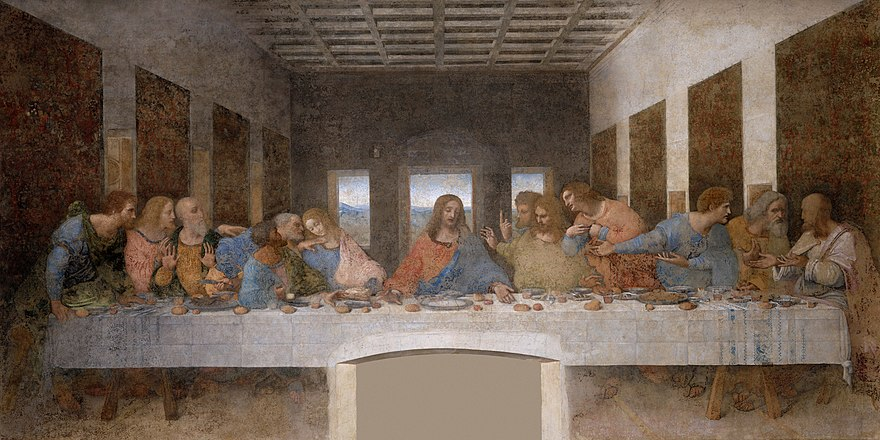Classical Era Art
Morality and Art of the Classical Era
I am going to be talking about a few different paintings from the Classical Era that I think show morality through the pieces. I think that some pieces just get looked at but not really understood fully, so I am going to show how these artworks show morality. Starting off with The Oath of Horatii.
The Oath of Horatii by Jacques-Louis David 1784.
The Last Supper by Leonardo da Vinci 1495-1498.
The Last Supper was painted by Leonardo da Vinci from 1495 to 1498 and was created in the refectory of the Dominican convent of Santa Maria delle Grazie in Milan, Italy. "The painting represents the scene of the Last Supper of Jesus with the Twelve Apostles, as it is told in the Gospel of John – specifically the moment after Jesus announces that one of his apostles will betray him.[1] Its handling of space, mastery of perspective, treatment of motion and complex display of human emotion has made it one of the Western world's most recognizable paintings and among Leonardo's most celebrated works." This shows how it is a piece from the Classical Era, because it has the religious setting and backstory to it. I think that this piece is something I personally would love to have in my own home. I think that it shows the picture really well. I love how in the windows in the background you can see what is outside, the little details like that make it easy on the eye.
The Birth of Venus was painted by Sandro Botticelli from 1484 to 1486 and was created in Medici Villa of Castello. " It depicts the goddess Venus arriving at the shore after her birth, when she had emerged from the sea fully-grown (called Venus Anadyomene and often depicted in art). The painting is in the Uffizi Gallery in Florence, Italy." The details in this piece including the water and the flowers show how this piece is from the Classical Era. Another big give away would be the detail in the people themselves in this piece. It also has a religious theme to it as well with it being the goddess Venus in the work. I don't think I would want to own this piece myself, just because I think it is rather much to have just in my house. It is a great work of art, just not something I would want to have myself.
Overall I think these three pieces of work (The Birth of Venus, The Last Supper, and The Oath of Horatii) show morality and art of the classical era. They have traits of their own in each work of art that show either morality or just art of the classical era. I think they are all very appealing works of art and if you didn't know about them already, I hope you liked them too!
References Cited
Wikipedia Contributors. “The Birth of Venus.” Wikipedia, Wikimedia Foundation, 27 Mar. 2019, en.wikipedia.org/wiki/The_Birth_of_Venus.
Wikipedia Contributors. “The Last Supper (Leonardo).” Wikipedia, Wikimedia Foundation, 28 Jan. 2019, en.wikipedia.org/wiki/The_Last_Supper_(Leonardo).
Wikipedia Contributors. “Oath of the Horatii.” Wikipedia, Wikimedia Foundation, 17 Nov. 2019, en.wikipedia.org/wiki/Oath_of_the_Horatii.






The depiction of the birth of Venus truly reflects the Rococo style's elegant and pastel characteristics. I enjoy the one-point linear perspective of each painting. The religious themes covered in each painting could also reflect how social perspectives have shifted throughout the years! The Rococo style has existed for centuries but you can also tell when religious and political beliefs have shifted when viewing the timeline of each painting. In terms of visuals, I find Jacques-Louis David's painting more appealing because of the depth in his shadows, you can tell how the Baroque period inspired some elements in his piece. Additionally, I find it funny that The Last Supper is a common painting found in some family dining rooms since it shows the moment where Jesus announces an upcoming betrayal. My grandmother has a painting of this hung up, and as a child, I found it weird that we have a painting of people in distress. Overall, I do think that the painting also shows important details in each apostle's face, like how Judas appears guilty instead of shocked.
ReplyDelete